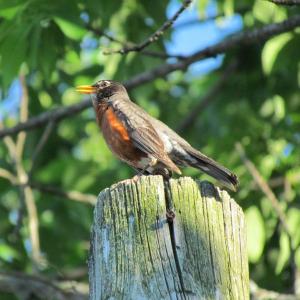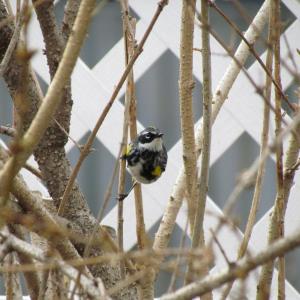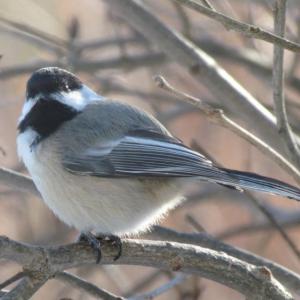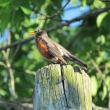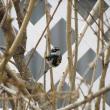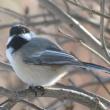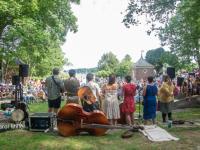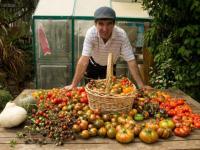Listening to the Acoustic Symphony of Life
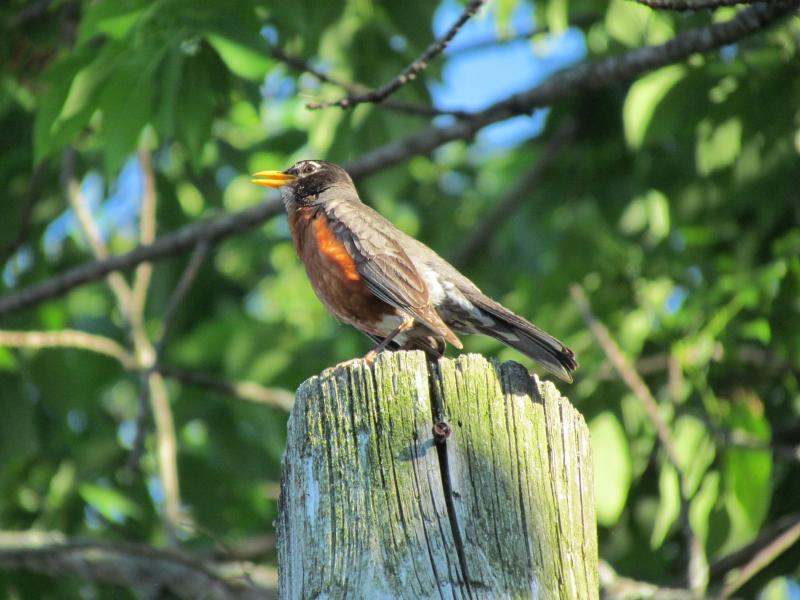 During a pre-dawn start to the day, the American robin was the only bird singing. By the time the sun rose, there was a symphony of bird song. Courtesy of Jeff Wells
During a pre-dawn start to the day, the American robin was the only bird singing. By the time the sun rose, there was a symphony of bird song. Courtesy of Jeff Wells
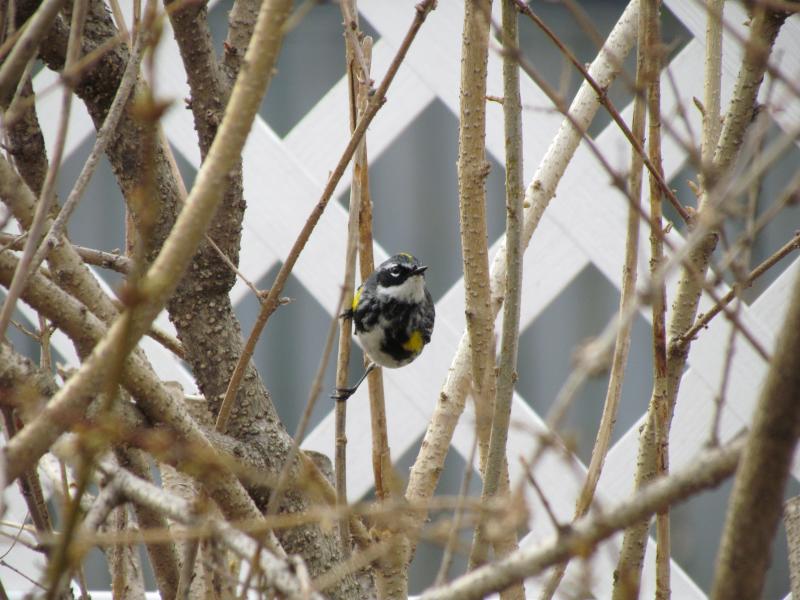 Yellow-rumped warblers are among the newly arrived bird species the authors have been enjoying during morning walks with their dog. Courtesy of Jeff Wells
Yellow-rumped warblers are among the newly arrived bird species the authors have been enjoying during morning walks with their dog. Courtesy of Jeff Wells
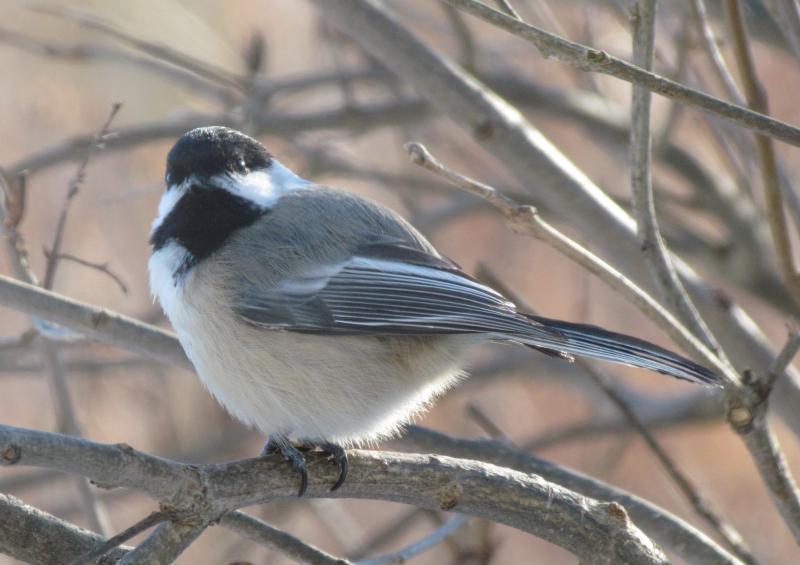 Adding to the bird song symphony are chickadee alarm calls when they see hawk in the area. Courtesy of Jeff Wells
Adding to the bird song symphony are chickadee alarm calls when they see hawk in the area. Courtesy of Jeff Wells
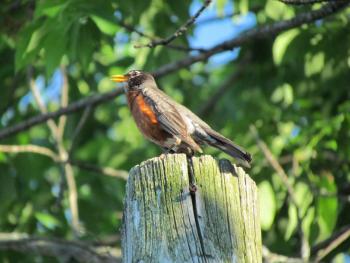 During a pre-dawn start to the day, the American robin was the only bird singing. By the time the sun rose, there was a symphony of bird song. Courtesy of Jeff Wells
During a pre-dawn start to the day, the American robin was the only bird singing. By the time the sun rose, there was a symphony of bird song. Courtesy of Jeff Wells
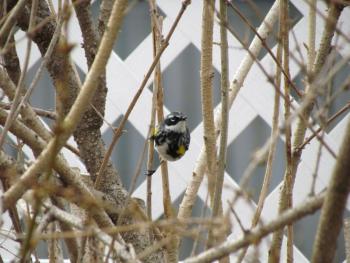 Yellow-rumped warblers are among the newly arrived bird species the authors have been enjoying during morning walks with their dog. Courtesy of Jeff Wells
Yellow-rumped warblers are among the newly arrived bird species the authors have been enjoying during morning walks with their dog. Courtesy of Jeff Wells
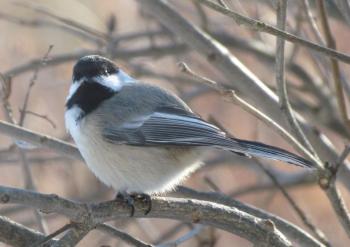 Adding to the bird song symphony are chickadee alarm calls when they see hawk in the area. Courtesy of Jeff Wells
Adding to the bird song symphony are chickadee alarm calls when they see hawk in the area. Courtesy of Jeff Wells
Each day as we walk our little black dog around the neighborhood, we revel in each new song and call as spring adds them to the acoustic environment that surrounds us. Those sounds are now layering at a rapid pace. The rollicking song of the ruby-crowned kinglet. Sweet, wispy trills and emphatic “chuck” calls of the yellow-rumped warbler. The persistent trills of the chipping sparrow. Bubbling, rambling vocal exuberance of the purple finch. Each morning brings a new thrill to ear. Perhaps the new sound we are enjoying the most is the loud “old-sam-peabody” whistles of the bunches of newly arrived white-throated sparrow.
The way that the sonic layers build up and become more complex as spring advances is mirrored each morning as we approach the peak of singing activity in our area, which is late May and June. We were up before dawn one day this week, and even while it was still pitch dark, robins were starting to sing. We didn’t hear any other birds until after about 15 minutes, when a single song sparrow started quietly singing. As the sky began to lighten, more song sparrows came to action and then began the cardinals. By the time dawn had fully arrived, the air was bouncing with sound from all directions.
From now through early June, there will be new bird species adding new sounds to the natural concert around us.
It makes us think of human-made musical compositions that start out with one or two instruments or voices and then are combined more and more with interweaving musical themes carried by instruments with different timbres and ranges.
Perhaps it would be more accurate to describe it as the sound of an orchestra warming up, since the singing birds are not following the script of a composer but are making their sounds independently.
Or are they?
Maybe they are not reading off a musical score, but birds of the same species are usually not singing and calling without consideration of other birds, at least others of the same species. Male birds often counter-sing with neighbors to make sure they all know that each is protecting his territory. Males will also copy and match the songs of each other, which may have more to do with showing females that they are competent and talented so will make a great mate.
We wrote recently about mockingbirds and thrashers that incorporate the songs and calls of other birds into their own. Actually there are many birds—not particularly known for being mimics—that add little bits of the songs and calls of other species into their songs.
And then there is the timing. In our area, robins always seem to be the first to begin singing in the darkness before dawn. Is that partly because they want to heard before everything else starts to sing and drowns out their sounds? In other words, are they reacting to the sounds of other birds?
Certain birds make alarm calls when hawks appear. Chickadees and starlings give particular calls when they spy a hawk passing over. Often all the other birds will stop making their sounds when they hear those cries of alarm.
Blue jays sometimes take it the other way and will give loud impersonations of broad-winged and red-shouldered hawks when neither species is anywhere nearby. Many birds will go quiet when they hear the imitations while others will give alarm calls.
So maybe it really is a symphony that we are hearing every day. But it’s a symphony of improvising musicians with complex interplays of sound. More musicians are arriving daily. We can’t wait to hear the piping notes of the Baltimore oriole, the “sweet, sweet, sweet, I’m so sweet” of the yellow warbler, the sputtering calls of the kingbird, and so many more.
It’s among the world’s greatest performances. Enjoy it while you can.
Jeffrey V. Wells, Ph.D., is a Fellow of the Cornell Lab of Ornithology and Vice President of Boreal Conservation for National Audubon. Dr. Wells is one of the nation's leading bird experts and conservation biologists. He is a coauthor of the seminal “Birds of Maine” book and author of the “Birder’s Conservation Handbook.” His grandfather, the late John Chase, was a columnist for the Boothbay Register for many years. Allison Childs Wells, formerly of the Cornell Lab of Ornithology, is a senior director at the Natural Resources Council of Maine, a nonprofit membership organization working statewide to protect the nature of Maine. Both are widely published natural history writers and are the authors of the popular books, “Maine’s Favorite Birds” (Tilbury House) and “Birds of Aruba, Bonaire, and Curaçao: A Site and Field Guide,” (Cornell University Press).

